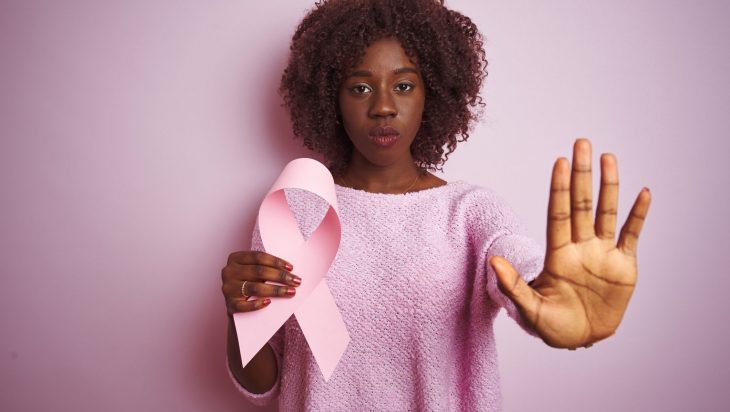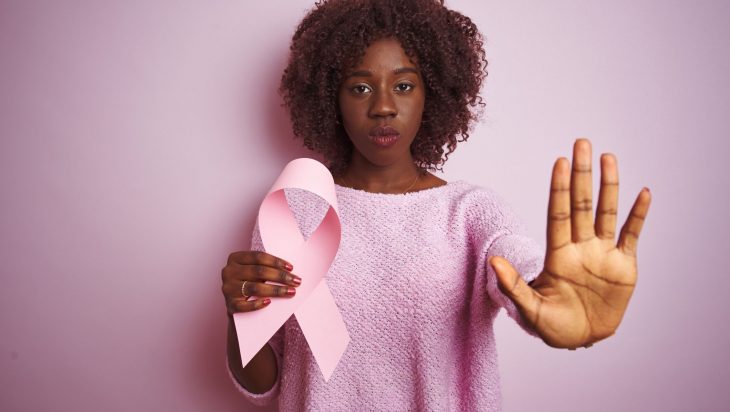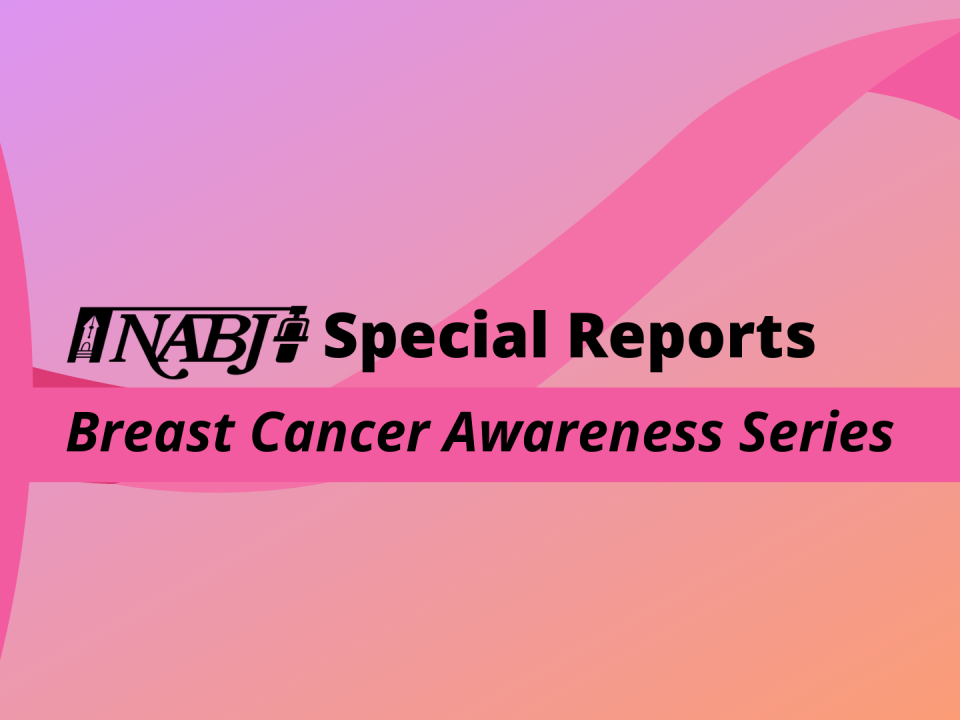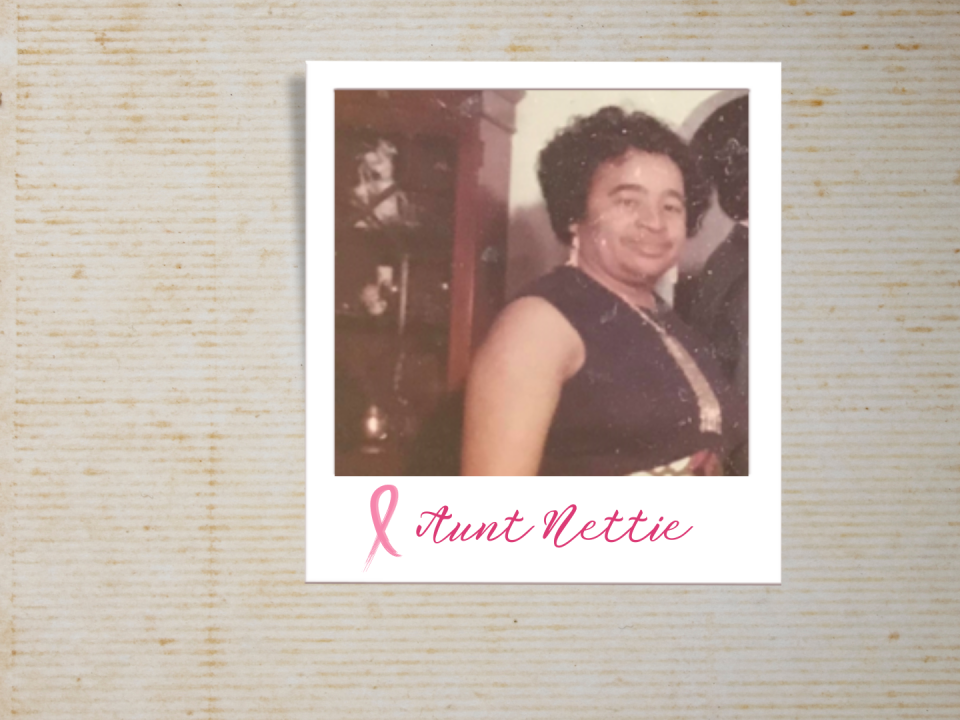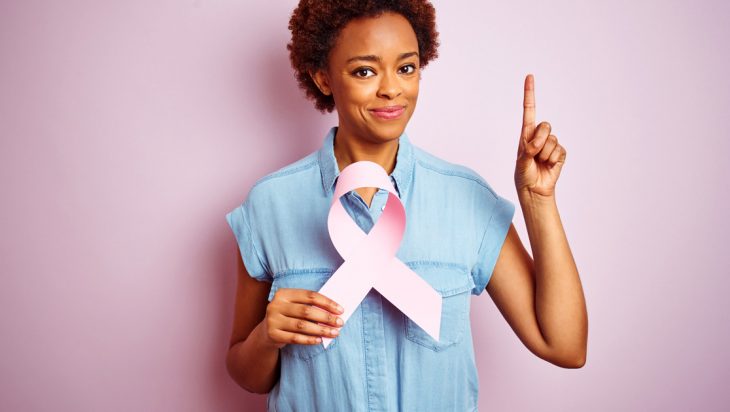Looking at How Breast Cancer Impacts Lives of Black Women

One Woman’s Mission to Educate Black Women About Genetic Testing for Breast Cancer
10/27/2021
Sisters Network Hosts National Town Hall on The Breast Cancer Crisis Black Women Are Facing
10/27/2021By AMBER HUDSON
October is Breast Cancer Awareness month, and according to the Breast Cancer Prevention Partners and the Susan G Komen Foundation, Black women have a 31 percent breast cancer mortality rate – the highest of any U.S. racial or ethnic group. That means that Black women are 40 percent more likely to die from Breast Cancer than white women.

Breast cancer is the most common cancer among Black women. Black women in particular, are more likely to present with the triple negative subtype of the disease, a subtype that is both more aggressive and associated with a higher mortality. In 2019, about 33,840 new cases of breast cancer were expected to occur among Black women in the US.
Compared to white women, Black women tend to be diagnosed with breast cancer at a younger age. The median age at diagnosis is 60 for black women and 63 for white women. Proper preventative care as well as regular breast examinations can lead to earlier diagnosis and treatment.
The Breast Cancer Prevention Partners recommends Black Women stay away from the following list of products which have links to causing cancer in Women of Color.
- skin lighteners
- hair relaxers
- Brazilian blowout treatments
- acrylic nails
When Breast Cancer is detected early and diagnosed at a localized stage, the survival rate within 5 years is 99 percent. For early detection, it is recommended to complete monthly breast self-exams, and schedule regular clinical breast exams and mammograms. The following are list of common indicators of Breast Cancer

- New lump in the breast or underarm (armpit).
- Thickening or swelling of part of the breast.
- Irritation or dimpling of breast skin.
- Redness or flaky skin in the nipple area or the breast.
- Pulling in of the nipple or pain in the nipple area.
- Nipple discharge other than breast milk, including blood.
- Any change in the size or the shape of the breast.
- Pain in any area of the breast.
Over the past 20 years, despite the universal drop in mortality rates, there has been a rise in the incidence of breast cancer in African American women. In particular, disparities between mortality rates for white and Black women have grown significantly. The mortality rate for Black women diagnosed with breast cancer is 42 percent higher than the comparable rate for White women. Triple negative breast cancer is diagnosed more often in American women of African descent than in those of European descent in the United States.
Breast cancer can be diagnosed through multiple tests, including a mammogram, ultrasound, MRI and biopsy. Once it has been determined that an individual has breast cancer, there will be the process of staging which will determine how far the cancer has spread. There are 5 stages of breast cancer: 0,1, 2, 3, and 4. A total of 63 percent of Breast Cancer cases are diagnosed in the localized stage.
Stage 0 and 1: This stage of cancer indicates that abnormal cells have been found in the lining of the breast
Stage 2: This stage means the breast cancer is growing, but it is still contained in the breast or growth has only extended to the nearby lymph nodes.
Stage 3: This means the breast cancer has extended to beyond the immediate region of the tumor and may have invaded nearby lymph nodes and muscles, but has not spread to distant organs.
Stage 4: This means that the cancer has spread to other areas of the body, such as the brain, bones, lung and liver.

Though early detection means a higher survival rate, and Breast Cancer impacts Black Women at significantly higher rates, There are several treatments available to significantly reduce the size of the cancer and reduce the spread of the disease as well as preventive care that can reduce the likelihood of contracting the disease. It is important to regularly conduct self examinations and keep up with regularly scheduled exams with your primary care physician and mammograms.











